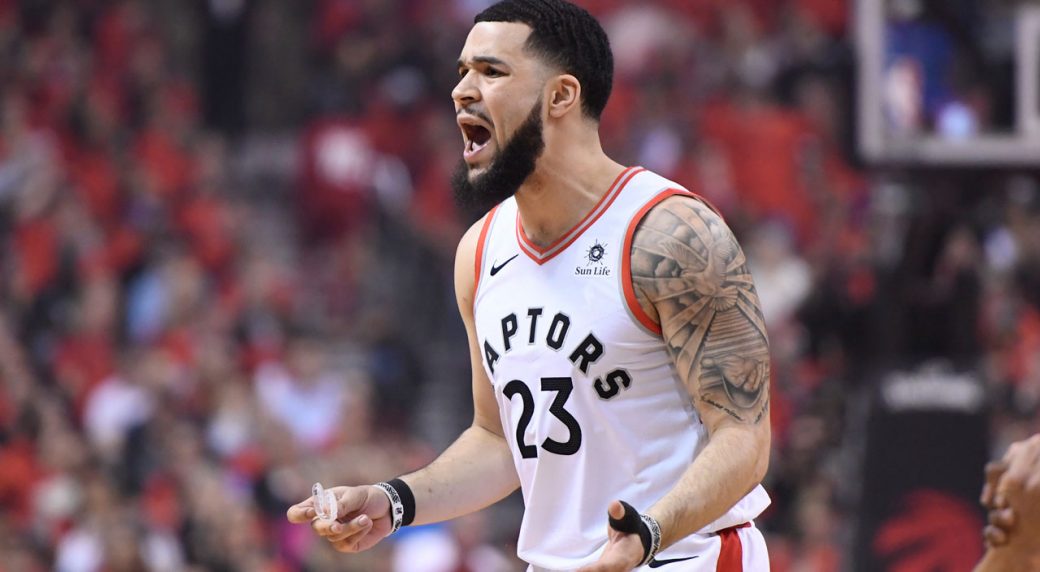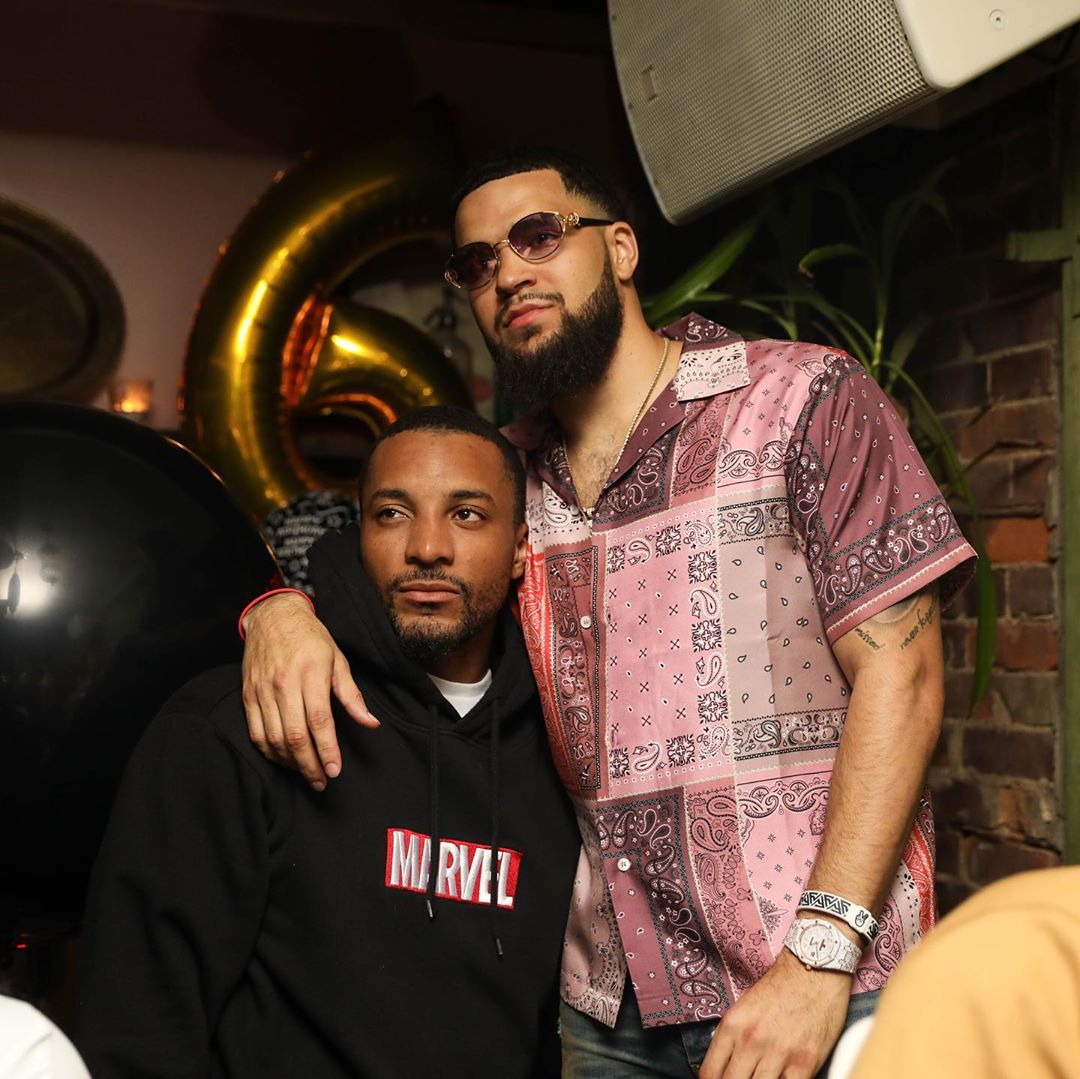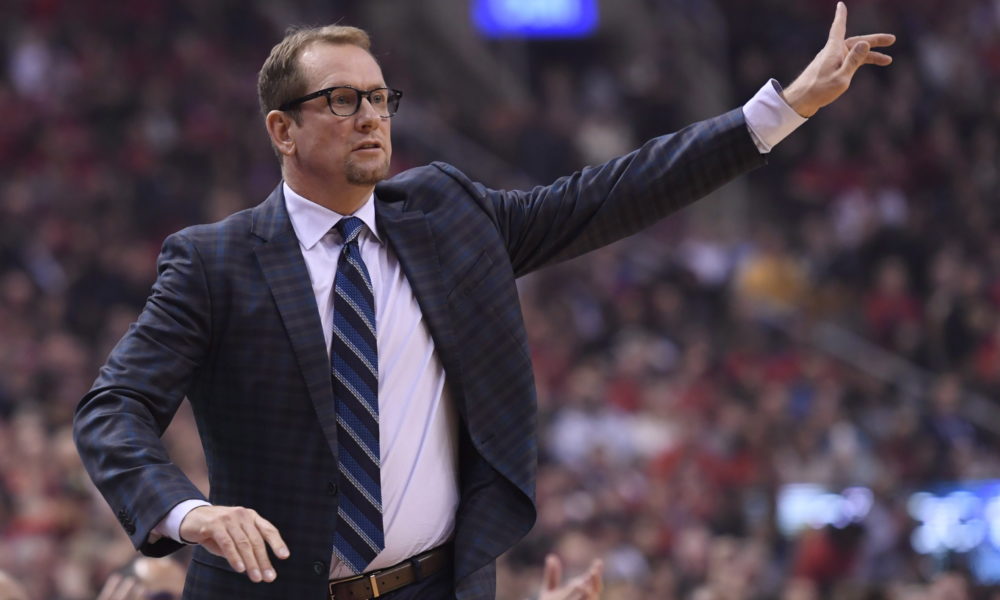Paulo Coelho wrote a perfect book in The Alchemist. An Andalusian shepherd chases a treasure and travels all the way to the pyramids of Egypt before returning to his sheep and his pasture and his treasure. Love, and home, was where he left it. He learned a lot — including how to become the wind and speak with God — but ended up exactly where he began. Same same but different, you could say.
Similarly, there’s not much we learned about Fred VanVleet this year that we didn’t know before.
His strengths remained his strengths. Let’s start there because those are the most important elements of VanVleet’s game. VanVleet has always been a terrific standstill shooter. It’s one of the most best qualities an NBA player can have if he’s going to play meaningful minutes. And in 2019-20, VanVleet shot 44.0 percent on catch-and-shoot triples in the regular season, and that rose to 45.8 percent in the playoffs on even more attempts per game. Both were top-ten marks, league-wide. Furthermore, VanVleet has eclipsed the 40 percent barrier on catch-and-shoot triples every year of his career. This was not something new for him.
And VanVleet’s defense remained stellar. In fact, he was, by my count, a top-five guard defender in the league this year, behind only mega-uber-stud defenders Marcus Smart, Ben Simmons, Kris Dunn, and Eric Bledsoe. He’s strong and smart and everything good on the defensive end, and he finished fourth in the league in steals per game and first in deflections. His defensive nuance has long been one of my favourite topics with which to bore my friends while drunk, and you, glorious reader, probably know too much about VanVleet’s defensive abilities for me to teach you something new. But that’s kind of the point. He’s been good. And his defensive work against Kemba Walker in the playoffs was one of Toronto’s brightest bright spots in the Boston Celtics series, but that was to be expected. That’s what VanVleet does.
This seasons, VanVleet’s strengths did not diminish, but rather grew brighter as his role grew. As he became a full-time starter for the first time in his career, he stepped into pseudo-All Star numbers of 17.6 points per game and 6.6 assists per game, career highs for him by wide margins. In fact, he averaged the second-most shot attempts per game this year for the Raptors. He formed a miniature Big Three for the Raptors this year alongside Kyle Lowry and Pascal Siakam. He set career highs in every category across the board this year.
Yet VanVleet did not add elements required for him to take the next step. Though aesthetically appealing, his finishing at the rim has long been a hole in his game and did not improve this year. He shot 51 percent at the rim this year, an 18th-percentile mark for his position league-wide. And he’s shot between 50 and 52 percent at the rim every season of his career. He’s prone to being blocked, particularly from behind, and he doesn’t have the strength to hold defenders off his line. Now, he could improve at some point; Lowry shot between 47 and 53 percent at the rim in each of his first four seasons before reaching 55 percent or above every year thereafter. Lowry in fact has become one of the best below-the-rim finishers in the league. But Lowry learned to change speeds, use his body, and hit opponents on the floor to create space in the air for his layup attempts. VanVleet hasn’t shown nearly enough ability in any of those areas to project that he’ll improve as a finisher, like Lowry did, in his fifth season.
Missing layups, and sometimes being scared away from even attempting them, was a teamwide plague in the playoff series against the Celtics. But it affected VanVleet as much as anyone else on the team. And when he can’t create shots inside the arc, he can’t create too much for himself anywhere; VanVleet’s three-point marksmanship is limited only to catch-and-shoot attempts.
VanVleet is not and has not ever been a great pull-up shooter. He shot 32.7 percent on 3.0 attempts per game this year. To compensate for that weakness and to create space in other ways, he added a few more feet of range to his jumper this year. But he needs to be able to create more triples with the ball in his hand. The pull-up triple has become one of the most important shots in the game. And if he does step inside the arc, VanVleet has never developed a mid-range game. He’s spent most of his career as an analytics darling, but he’s also eschewed poor-math shots like the floater and long two. But he could use those looks to create space for himself elsewhere. That he is a poor finisher against strong contests, a below-average pull-up shooter, and has no midrange game to speak of means his offensive arsenal is limited. He’s one of the best catch-and-shoot shooters in the league, which means he will always be a plus offensive player. He’ll need more to step into a starring role.
A great defensive team in Boston took away Toronto’s strengths. And when asked to lean on his weaknesses, VanVleet couldn’t deliver. It was an apt microcosm of his development as a player that on Toronto’s final possession of the season, VanVleet was asked, after a hammer play for Norman Powell in the corner fell apart, to create a triple for himself and couldn’t hit the rim.
VanVleet has plenty of time to improve as a player, and he’s already a wonderful one. Good enough, at this level, to make an All-Star team or two given a few lucky breaks. But in the largest opportunity of his four years in the league, he hasn’t added the elements of his game required to move beyond that status.
Perhaps the only area in which VanVleet did take big steps forward was his passing. He became at least an average pick-and-roll passer, particularly to a popper or to shooters surrounding the action. And though he remains a slow decision maker with the ball, the actual decisions he made did improve. His assist rate leaped while his turnover rate stayed quite low for a guard, both indicators of good, smart passers. Toronto asked VanVleet to play far more often with the ball in his hands, and he responded with solid guard play, despite his on-ball limitations. Passing was a big reason why.
And so VanVleet is where we left him before. He learned some skills — pick-and-roll passing, most evidently — but nothing changed who he is as a player. His projections remains the same. Like Coelho’s shepherd, VanVleet has been on a long, arduous journey. The undrafted guard won a championship and this year grew into a full-time starter. He was, on many nights, Toronto’s best player. But in many areas, he is still the same player that entered the league. And like the shepherd, with his free agency approaching, a deserving VanVleet is also about to find a treasure.



